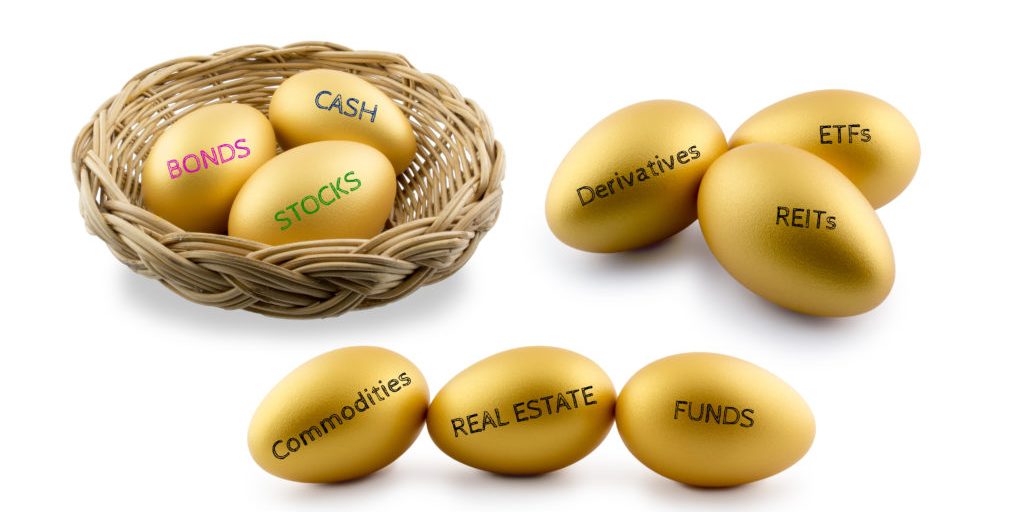Diversification is a key part of any comprehensive investing strategy.
It’s fair to say that deciding where to start or what to do can feel overwhelming with all the investment options out there.
Just listen to CNBC, Fox Business, or Bloomberg any day of the week, and you’ll hear dozens of opinions about where to invest your money.
“Buy stocks,” “buy bonds,” “buy gold!” “sell Bitcoin!” “buy real estate” – the options feel endless.
On the surface, the advice can be confusing and, at times, contradictory. Ultimately, they are all hinting at one fundamental piece of advice: diversify your portfolio.
What exactly is diversification?
Simply put, it’s the process of spreading your investments across multiple industries and asset classes. You’ve probably heard the saying “don’t put all of your eggs in one basket.” As it turns out, this applies, quite literally, to your investment portfolio.
To better understand diversification’s benefits, you must first understand modern portfolio theory (MPT) and correlation. MPT argues that an investment should be evaluated on how it affects an overall portfolio’s risk and return. This is important because the risk and return profile of one investment can influence an entire portfolio. When you have a diversified portfolio, you will have assets with varying levels of risks, returns, variances, and correlations.
As for correlation, it’s the degree of a relationship between two assets. For example, if two assets are perfectly correlated (correlation equals 1), when one asset price goes up, the other increases as well. Likewise, if one goes down, the other will too. A well-diversified portfolio includes assets with low correlation preventing the entire portfolio value from collapsing in bad times.
Integrating Diversification in your portfolio
So, what does a diversified portfolio look like? It includes a mix of real estate, stocks, bonds, treasuries and potentially other types of alternative investments. All these assets have varying risks, returns, and correlations with one another.
For example, Treasuries and bonds generally have lower returns than stocks and real estate. But they can be a good source of steady income. These are your portfolio’s lower-risk portfolio stabilizers. Real estate and stocks can provide more significant long-term returns but increase the overall portfolio risk. These assets are your portfolio’s growth engine.
According to PREA.org research, real estate and stocks have a low correlation of 0.07. Real estate has a -0.15 correlation with bonds. By investing in all three of these types of assets, your portfolio return is resilient from events that may affect real estate or stocks exclusively. A great example of why this is important is the 2008 Great Recession and the stock market drop in early 2020. Private market real estate did not necessarily lose its value even when stocks declined sharply. In fact, as bond values took a hit during this same period, private market real estate (multifamily, single-family, industrial, and logistics) increased in value. The private market real estate, in this case, stabilized the portfolio value for long enough to allow an investor to maintain their ownership in stocks, which of course, returned to near all-time highs as of the publishing of this article.
A diversified portfolio helps mitigate the effects of unfavorable market fluctuations while still allowing you to take advantage of the bull market runs. At the end of the day, it’s important to find the right balance of assets for your risk tolerance. Creating a well-diversified portfolio can help you hit your financial goals faster!

